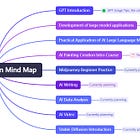Before Diffusion Models: The Untold Story of GANs in AI Art(AI Painting Creation Intro Course 5)
Explore the evolution of AI art with GANs and diffusion models. Learn the algorithms, image generation techniques, and groundbreaking innovations shaping the future of digital art.
Welcome to the "AI Painting Creation Intro Course" Series
Starting today, we will officially begin studying the theoretical aspects of AI art.
I’ll guide you through understanding the algorithms behind image generation models. You’ll learn the common algorithmic modules used in mainstream AI art algorithms and train a diffusion model from scratch.
Our course focuses on AI art techniques based on diffusion models. However, before 2022, GANs were the industry’s preferred AI art technique.
In earlier AI-generated art, GANs (Generative Adversarial Networks) were the go-to choice.
You’ve likely seen various visual effects on social media, like age changes or gender swaps—these are typically powered by GANs.
But with the release of DALL-E 2 and Stable Diffusion in 2022, diffusion models have become the dominant technology in AI art.
When it comes to fine details and diversity of content, diffusion models often outperform GANs.
Despite this, understanding GANs is still essential for beginners in AI art, as it helps in grasping the improvements made by diffusion models.
Additionally, the models we will learn about today are commonly asked about in interviews.
Before diving into AI art techniques based on diffusion models, let’s revisit GANs, exploring how they rose to prominence and reviewing key milestones in their development.





